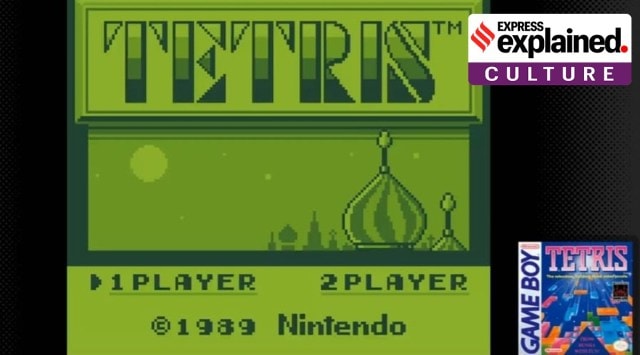Created in the 1980s, words like ‘timeless’ and ‘perfect’ often figure in the descriptions of Tetris to date. They draw attention to how even in the wake of newer, more high-quality games with top-notch graphics, the simple puzzle game continues being popular. Its journey involved secret messages, international maneuvering, finally culminating in worldwide popularity. Here’s how it began.

Who created Tetris?
Most of the popular games of today have their roots in the US or Japan, with companies like Microsoft’s Xbox, Sony and Nintendo being the giants of the market. However, there have been outliers over the years, such as the supremely popular Angry Birds game that came from Finland.
What makes the origins of Tetris unique is that it came from the USSR in 1984, when the communist system in place meant that the spread of new ideas and objects was regulated. The state decided what was to be created by workers and inventors, how much, and how it was to be distributed among the population for consumption.
Within this setup, in 1984 Russian scientist Alexey Pajitnov developed the first version of Tetris on an Electronika 60, a Soviet computer. At the time, he was working as a software engineer for the Academy of Science of the USSR. According to a CNN report, Pajitnov was tasked with testing the Electronika 60, for which he wrote a game based on a puzzle from his childhood.
That game was called pentomino, a puzzle game played with wooden blocks. Each block is a shape made up of five smaller, equally sized squares. These blocks are to be placed to fit on a rectangular board perfectly, and the player to place the final block wins.
But in Pajitnov’s game, made for the computer, he used four square-figures instead of five. Given that the Electronika did not allow for graphics, he used brackets to denote boxes. In his game, such shapes would drop on the screen in regular intervals, and the player must stack the shapes in a horizontal line. This leads to the accumulated boxes disappearing, scoring points for the player. As one continues playing, the speed with which the shapes drop increases, making orderly stacking difficult, and if too many shapes pile-up chaotically, the game is over.
Story continues below this ad
He named this game “Tetris” – made of Tetra, the Greek word for ‘four’ and Tennis, a sport he liked.
How did the game spread globally?
Within a year of its creation, Tetris spread throughout the Soviet Union, thanks to requests from fellow engineers and friends who were sharing it through floppy disks, which were used for storing and sharing data at the time. It was then ported to the IBM Personal Computer, allowing for better graphics. “It was like a wood fire. Everyone in the Soviet Union who had a PC had Tetris on it,” Pajitnov told CNN.
He soon heard the game was being played in countries like Hungary, and eventually software salesman Robert Stein came across it. Stein attempted to discuss a potential sale with Pajitnov but even attempting to do business with someone in the West went against the state’s policies.
At the time a policy of “Iron Curtain” was in place, as former UK Prime Minister Winston Churchill termed in a 1946 speech. It referred to an imaginary line running through eastern Europe countries signifying the USSR’s sphere of influence and signaling a Soviet-led barrier against Western ideas, including restraining communication and any kind of ties with them.
Story continues below this ad
Because of these issues in communication and language barriers, Stein believed the deal was on and he began sub-licensing the game to companies in the US and the UK. However, he received a message from Elorg or Electronorgtechnica, the Soviet government’s agency for software and hardware exports. He was brought to the country for questioning but eventually the deal was cleared, and the game launched on PCs in North America and Europe.
Dutch software entrepreneur Henk Rogers, the AppleTV film’s main character, saw the game at a trade show in the US in 1988. He helped bring it over to Japan, where it became a massive hit and sold two million copies. Rogers then reached the USSR to negotiate for the rights of the game to be pre-installed on Gameboy, the handheld console of Nintendo. After several hiccups, such as Stein wanting the game, the deal went through and Tetris sold more than 40 million copies. Pajitnov and Rogers formed a partnership, and the Tetris Company was formed in 1996. Both of them are now based in the US.
What explains the popularity of Tetris?
A host of reasons have been given for understanding the Tetris phenomenon. Mainly, it’s simple to understand for a beginner and does not require complicated devices or particular skills to play. Multiple versions of the game have been released over the years but the original setup is the same, helping a kind of loyalty get associated with the game and its brand.
Video game developer Niels Monshouwer, the co-founder of WeirdBeard Games, told the BBC, “It is the prime example of ‘easy to learn but hard to master’. On the most basic level, there’s a pleasure in tidying up. Each time you play, you get better.”
Story continues below this ad
Pajitnov seems to concur in some way, and has said earlier, “I think that’s what makes the game so addictive. We have an inherent desire to create order out of chaos, and Tetris satisfies that desire on a very basic level, while being easy to understand and quick to learn.”








































